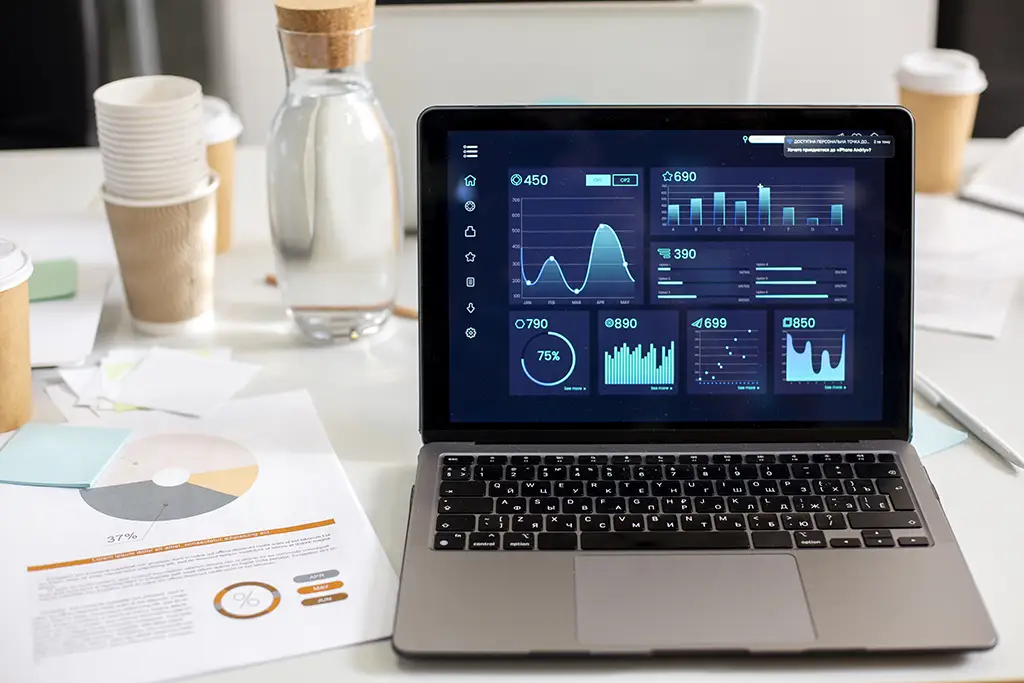No products in the cart.

Inventory management is the process of tracking, moving and restocking a business’ inventory. In fact, it is critical for any business that deals with physically selling products. Effectively managing your inventory can mean you improve customer satisfaction, cash flow, profitability (and avoid stockouts and overstocking), resulting in improved business success. However, with so many moving parts, we understand that knowing where to start is a challenge, let alone keeping track of it all.
Streamline your inventory management processes with these 8 effective tips and tricks to boost cost efficiency, profitability and customer satisfaction!
8 Tactics for Efficient Inventory Management
1. Set Inventory Goals
Setting clear and measurable inventory goals is the first step towards having a successful inventory management system. To do this, you must first identify your inventory needs based on seasonality, demand and sales history. Then after setting your goals, you ensure your inventory aligns with your business goals and you can then optimise your cash flow and better manage your inventory.
Your inventory management Key Performance Indicators (KPIs) should be SMART. Creating SMART goals that are specific, measurable, achievable, relevant, and timely will help you manage your business objectives and actually reach your goals. Some examples of goals include those for inventory turnover and levels, and order frequency. If you’re struggling to think of any, EazyStock has some great inventory KPIs ideas you should set to achieve success.
Of course, if anything changes like your business needs, performance and market conditions, you should regularly review and adjust your inventory goals accordingly. Don’t keep the same goals if they are no longer working for you!
2. Establish Safety Stock Levels
Safety stock refers to the extra amount of inventory, or buffer, that you keep to ensure that you have enough stock to meet unexpected demand spikes or any supply chain disruptions. Stockouts can cause issues with customer satisfaction and your sales, so it is essential to have enough stock to match demand. Use historical sales data, market trends and lead times to determine the optimal safety stock levels you will need based on your own business.
3. Monitor Inventory Levels

Source: Image by Lifestylememory on Freepik – Inventory Management
It’s important to monitor your inventory levels regularly to make sure you have enough stock to meet demand, but you are also not overstocking. Using inventory management software can help you track your inventory in real-time, allowing you to identify trends in sales and demand. Not only that, but inventory management software can give you notifications when your stock levels have reached a certain threshold, one you can set depending on your safety stock levels. Then, you can make more informed purchasing decisions about your inventory levels.
4. Forecast Demand
One way to effectively manage your inventory is by forecasting demand. By accurately forecasting, or predicting, the amount of inventory you will need to meet demand in the future helps you optimise your inventory and buy certain products only when you need them. How can you do this? Analyse your historical sales data, customer purchase history and market trends for your industry, along with numerous other factors. You can either manually forecast demand or utilise inventory management software with algorithmic analysis to generate accurate forecasts. Therefore, you can better project your future demand and adjust your inventory levels accordingly.
5. Use Barcodes and RFID Technology

Source: Pressmaster via Envato Elements – Inventory Management
There are a few inventory management types that you can take advantage of to help streamline your inventory management processes. Barcodes and RFID technology are some of them! This type of technology can easily track your inventory – products and raw materials – through your supply chain, from when you receive it, when it’s in storage and when it gets shipped out. These can also be used to store information about the product, track and quickly update inventory levels, identify stockouts, monitor stock movement in real-time and also automate any inventory management tasks. By using barcodes and RFID technology, you can streamline managing your inventory, reduce errors, and save time and costs.
6. Partner with Reliable Suppliers
A large part of your inventory management is your suppliers. They are the ones to provide you with the products and materials you need to stock your business, and so having good relationships with them is important. By partnering with reliable suppliers, you can ensure you are consistently receiving high-quality products on time. Moreover, building strong relationships with your suppliers can let you negotiate better prices and other benefits. So how can you make sure your suppliers are reliable? Do research, compare prices and lead times, and in your initial negotiations, make an arrangement where both of you are receiving good terms of service.
7. Use Data Analytics

Source: Image by Freepik – Inventory Management
Data analytics can majorly improve your inventory management by providing you with valuable insights into your processes as well as easily identify opportunities for improvement. You may spot trends or inefficiencies in stock levels, order fulfilment times and waste, resulting in better optimised inventory levels. Additional inventory management software and other tools can help you easily and automatically collect, analyse and manage your data for more streamlined processes.
8. Implement a First-In, First-Out (FIFO) System
A First-In, First-Out (FIFO) system is a strategy used for inventory management that ensures that your oldest products are sold or used first. Why? What’s so important about moving your oldest products first? The FIFO method helps reduce the risk of expired, wasted or obsolete inventory, so your turnover is optimised and you don’t have money tied up in unusable stock. All you need to do to implement a FIFO system into your business is label products with the date of receipt, organise them accordingly, regularly track your inventory levels, and then establish a process for moving the oldest inventory first.
8 Tactics for Efficient Inventory Management
Effective inventory management is essential for businesses of all sizes, with benefits that range further than just counting stock. When you implement the right tactics, you can not only optimise your inventory levels and satisfy customer demands, but you also reduce costs and improve the efficiency of your business. You’ve read about some strategies you can use here!
However, remember that maintaining effective inventory management processes takes ongoing time, effort and monitoring. It’s not a one-and-done kind of thing. You’re going to need to frequently review your inventory levels, sales and demand patterns, and adjust your inventory management as necessary. You can use inventory management software to help speed up the process!
But in the meantime, are you still looking for more inventory management tips to get you started? We’ve got you covered with these 10 Essential Tips for Effective Inventory Management!
EPOS
If you’re in need of a robust inventory management system in Singapore, you’re in the right place. For businesses seeking an ultra-seamless POS that provides precise control over your inventory, EPOS is one of Singapore’s leading POS system vendors. Use powerful features designed to help your business thrive by improving efficiency, reducing costs and increasing profitability. Get to know our system by signing up for a free, non-obligatory demo!
• Written by Adrija Chakravarti
Was this article helpful?
YesNo



